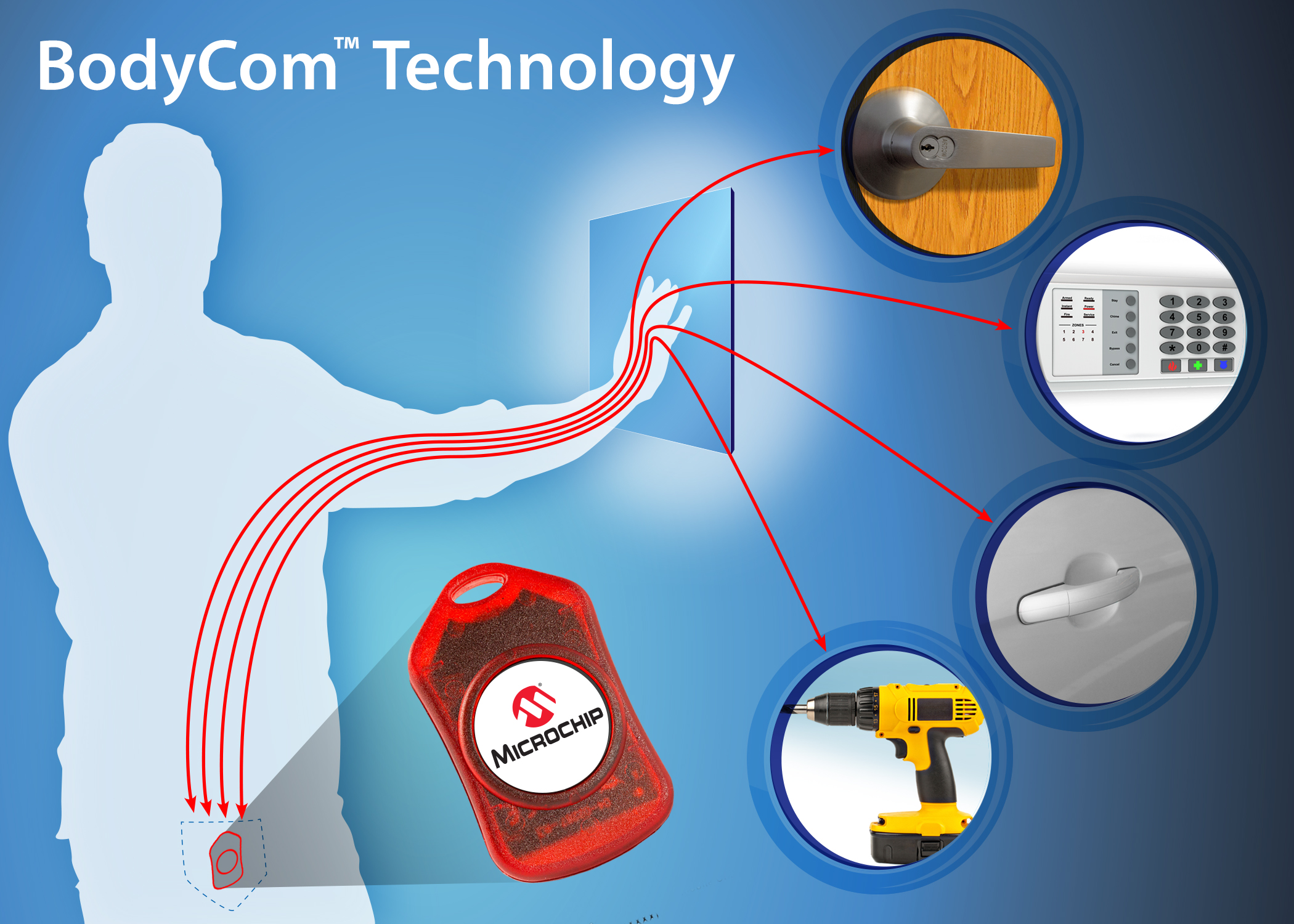Framework provides short-range, low-data-rate communication solution for securely connecting to wide range of wireless applications
27th February 2013 [NASDAQ: MCHP] — Microchip Technology Inc., a leading provider of microcontroller, mixed-signal, analog and Flash-IP solutions, has announced the launch of its BodyCom™ technology, which provides designers with the world’s first framework for using the human body as a secure communication channel. Compared to existing wireless methods, BodyCom technology provides lower energy consumption, while further increasing security via bidirectional authentication. Because no RF antennae are required, BodyCom technology allows for simpler circuit-level designs and a lower bill of materials (BOM). All of this is enabled by the BodyCom Development V1.0 Framework, which is supplied through free software libraries that work on all of Microchip’s more than 900 8, 16 and 32-bit PIC® microcontrollers.
BodyCom technology is activated by capacitively coupling to the human body. The system then begins communicating bidirectionally between a centralized controller and one or more wireless units. There are a broad range of applications where secure wireless communication is essential, and there is no more secure channel than the human body. This is especially true when you add bidirectional authentication that supports advanced encryption, such as KeeLoq® technology and AES. For example, BodyCom technology helps prevent the “Relay Attack” problem that is typical in automotive passive-keyless-entry security systems.
Most secure, short-range communication designs are battery-powered and highly cost-constrained. BodyCom technology significantly increases battery life by eliminating the need for a wireless transceiver or high-power inductive fields. It also simplifies development and lowers BOM costs by not only making antenna design unnecessary, but also by using a low-frequency framework with a common microcontroller and standard AFE frequencies (125 kHz and 8 MHz)—no external crystals are needed. And because it complies with FCC Part 15-B for radiated emissions, BodyCom technology eliminates the cost and complexity of certification.
Additional example applications include Access Control (security systems, home/industrial door locks, pet doors); Personal Safety & Security (equipment access/disable, power tools, firearms, computer systems); Medical (patient monitoring, hospital-room access, equipment tracking); and Consumer (profile management for gaming consoles and exercise equipment).
“BodyCom technology provides a more secure, low-cost and easy method for implementing short-range, low-data-rate wireless communication with the lowest power consumption,” said Steve Drehobl, vice president of Microchip’s MCU8 Division. “Our BodyCom Development Framework is available via free download, and it works with any of our PIC microcontrollers, which presents a very low barrier of entry for designers.”
Development Support
To further enable development and speed time to market, Microchip is also announcing the BodyCom Development Kit (part # DM160213). This kit is available today, and comes with a central controller unit and two wireless mobile units.
The free BodyCom Development V1.0 Framework is also available today, and comes with a communication library, application code examples and a development GUI for use on personal computers. Additionally, application note AN1391, which provides an introduction to BodyCom technology, is available at http://www.microchip.com/get/GA5E.
For more information, contact any Microchip sales representative or authorised worldwide distributor, or visit Microchip’s Web site at http://www.microchip.com/get/GA5E.



